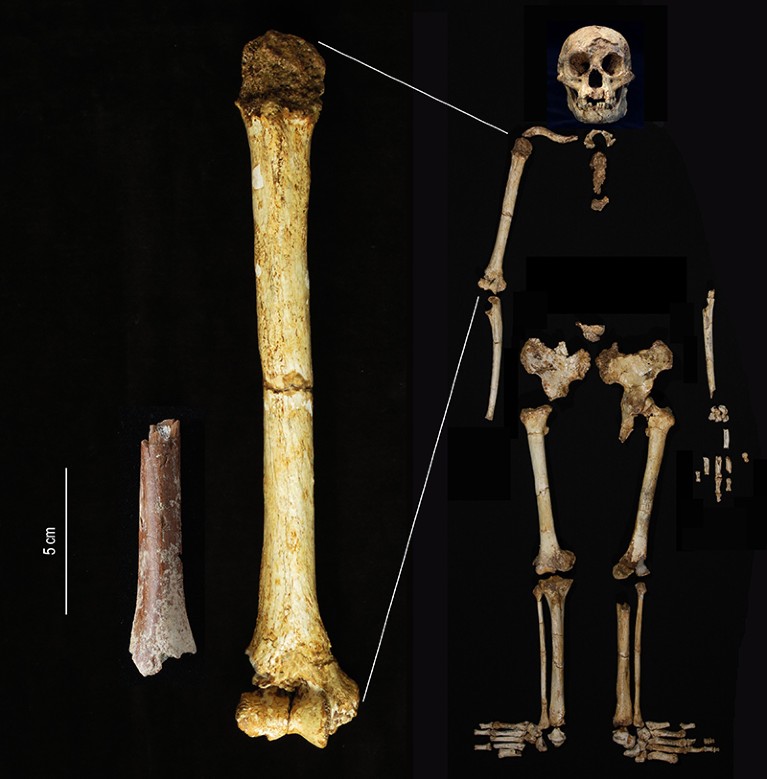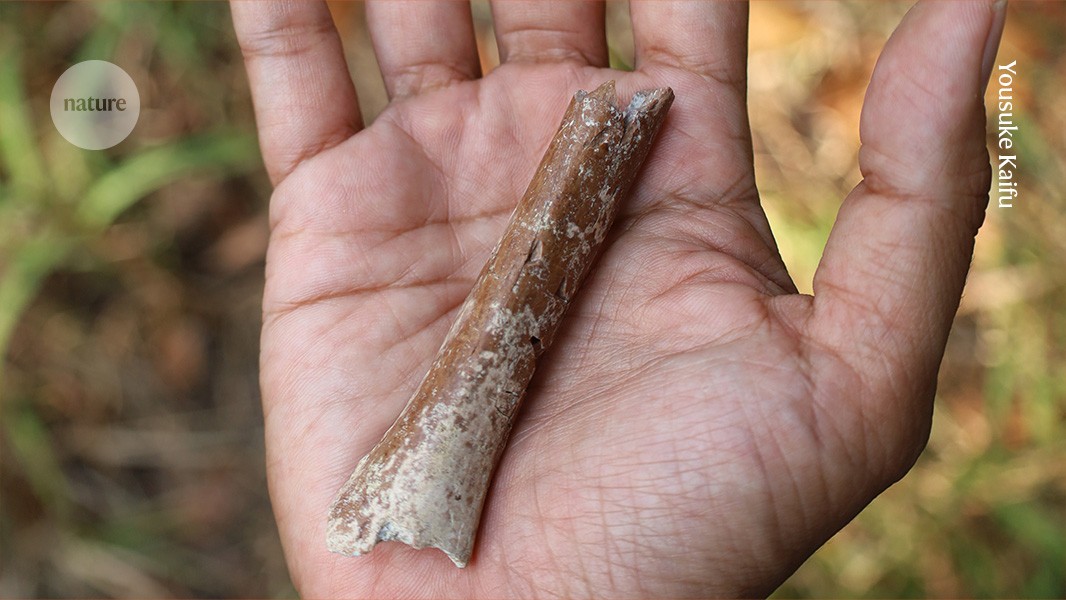
Credit: Yousuke Kaifu
A 700,000-year-old arm bone found on an Indonesian island is shedding light on the evolution of Homo floresiensis1 — an ancient relative of modern humans nicknamed hobbit owing to its small stature.
At just 88 millimetres long, the arm bone fragment belonged to the smallest adult hominin ever found. The discovery, published on 6 August in Nature Communications, supports the idea that H. floresiensis’ ancestors evolved into a much smaller species just a few thousand years after arriving on the remote island of Flores in what is now Indonesia.
The discovery of Homo floresiensis: Tales of the hobbit
Island dwarfism — the process by which animals evolve a smaller body size as a result of being isolated on an island — has happened frequently throughout evolutionary time. But before the discovery of H. floresiensis, reported in 20042,3, “no one thought it could happen to humans”, says study co-author Yousuke Kaifu, an anthropologist at the University of Tokyo.
The suggestion that H. floresiensis’ ancestors developed dwarfism so rapidly after arriving on the island is “surprising, but also exciting”, he adds.
Island effect
Species that find themselves trapped on an island often undergo massive changes to adapt to their new environment. Mammoths, deer and other animals that have ended up on islands have all shrunk — possibly because there is less food available or because there are fewer threats from predators, says Kaifu.
Scientists suspect that something similar might have happened to the ancestors of H. floresiensis. One working theory of how the species came to be is that a group of ancient humans — possibly the larger Homo erectus — washed up on Flores Island after a tsunami or large storm. The first H. floresiensis site to be found contained fossils dating to around 60,000 years ago4, just a few thousand years before the species went extinct. But tools found on the island suggest that hominins arrived there much earlier, around one million years ago5.
What these early settlers looked like — including how tall they were — remained mysterious for years. The first clues that early versions of H. floresiensis might also have been small began to emerge in the mid-2010s, when a dig at another site uncovered unusually small jawbones and teeth dating to about 700,000 years ago6. But inferring body size from teeth or facial bones tends to be imperfect, says Karen Baab, a palaeoanthropologist at Midwestern University in Glendale, Arizona. To get a more reliable measure, researchers needed bones from limbs or other parts of the skeleton.

Credit: Yousuke Kaifu
A breakthrough came in 2015, when the team was reconstructing fragmented bones in the laboratory and realized that some broken pieces belonged to a humerus — the bone that connects the shoulder to the elbow. The fossil was missing both end pieces but could still provide some clues to the size of the ancient human it belonged to.
Adult bone
The size of the humerus indicated that its owner was tiny — but it could have belonged to a child rather than an adult. In the latest study, Kaifu and his team examined a slither of the bone under a microscope to investigate this possibility. The structure of the bone indicated that it belonged to a fully grown adult.
‘Hobbit’ relatives found after ten-year hunt
The arm bone is 9–16% smaller and thinner than those belonging to the 60,000-year-old H. floresiensis specimen, confirming that its owner was “at least as small” as later members of the species, says Baab. The researchers estimate that this individual would have been no more than 108 centimetres tall.
The findings suggest that H. floresiensis had evolved to be shorter within 300,000 years of the species’ ancestors arriving on the island. Cranial fossils of H. floresiensis suggest that their brains, too, shrank during that time. The rapid emergence of a new body type reveals the many pathways that human evolution can take, says Kaifu. “We think it was destiny [for humans] to become clever,” he says. “Flores tells us that there are other ways for humans to be.”



